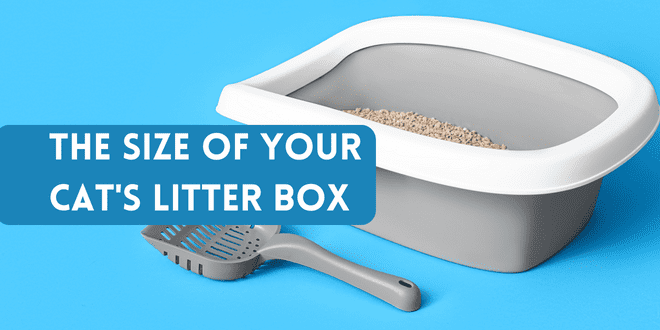
When it comes to choosing a litter box, it’s important to match the size of the box to the size of your cat. It’s easy to get influenced by a desire to choose a box based on whether it will fit in a certain location. In some cases that may still work out fine for your cat but in other cases, it means kitty ends up squeezing too much cat into too little litter box. Your cat shouldn’t have to become a contortionist every time he has to go to the bathroom. The litter box size, shape, and type should always be chosen based on what provides the most convenience, comfort, and security for your cat. Too many times, we don’t put the cat’s needs first when shopping for the litter box. We also tend to choose boxes that are too small because the litter box isn’t something we’re thrilled to show off. As a result though, a box that’s too small becomes a source of stress for the cat and that’s a litter box problem just waiting to happen.
What Size Litter Box is Best for Your Cat?
In general, the litter box should be one-and-a-half times the length of your cat from tip of the nose to base of the tail. That gives the cat enough room to eliminate, cover waste and still have plenty of clean litter for a couple of return trips. A litter box that’s large enough for your cat will also greatly increase his comfort level. Your cat won’t have to hang some of his body over the edge. Discomfort in the litter box can be very stressful, and stress is the LAST thing you want your cat feeling when it comes to the litter box set-up. If a cat becomes uncomfortable in the box he may choose another location, and that choice may not be to your liking.
Match Your Cat’s Size
If you have a kitten, the litter box should be low-sided and easy to enter and exit. As the kitten grows, switch out the small box for a larger one. If you have an adult cat who has gained weight and isn’t quite as svelte as he used to be, the litter box you originally bought may no longer be adequate. Comfort matters when it comes to time spent taking care of personal business. If you’ve ever had to use an airplane lavatory, you can probably relate!
Don’t go Overboard
While a large litter box is great, don’t get something so big you won’t be able to lift it in order to scrub it clean. Just scooping the box isn’t sufficient when it comes to maintenance. You will have to scrub the box out at least once a month (more often if you’re not using scoopable litter) so make sure it’s still a size that’s manageable. If you do get creative and find a plastic tub that’s super-sized, just be sure you can handle the cleaning or will have some assistance when it comes time to dump all the litter, clean the box, and refill. A large box filled with 200 pounds of litter isn’t an excuse to never thoroughly empty and scrub the box on a regular basis.
More Than One Cat?
If you have a multicat household, don’t try to get away with having one large litter box. No matter how big the box may be, cats don’t always want to share it. In order to keep a lid on any tension between the cats, it’s better to have multiple litter boxes scattered throughout the home. This way, one cat doesn’t have to cross through another cat’s preferred area in order to eliminate. When it comes to number of boxes, make sure you have more boxes than cats. In general, the litter boxes should outnumber your cats by at least one. Each box still needs to be the right size and don’t line them up together side by side. Pay attention to preferred areas so you can locate boxes in spots where each cat feels the most comfortable.
Need More Information?
For more step-by-step information on how to create an ideal litter box set-up or for help with other cat behavior problems relating to the litter box, refer to any of Pam Johnson-Bennett’s books. Pam’s books are available at bookstores and online. We’ve included links to Amazon here on our website.
If you have a question regarding your cat’s health, please contact your veterinarian. This article is not intended as a replacement for your cat’s veterinary care.



